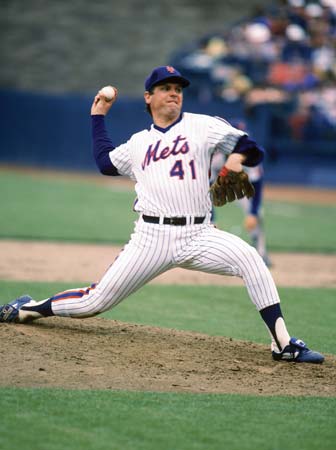In today’s installment of “The Summer of 1973; The Forgotten Championship,’’ I chose a game from the month of April and will analyze it through the box score.
My pick is the fourth game of the season, April 12, at St. Louis, with Tom Seaver outdueling Bob Gibson, 2-1, to give the Mets a 4-0 start.

It was Seaver’s second start, with his first being a shutout over Philadelphia’s Steve Carlton. His third start was a 1-0 loss to Chicago’s Ferguson Jenkins.
Three games against three Hall of Famers, and five runs of support. It was pretty much that way for Seaver that season, his second in which he won the Cy Young Award.
Seaver was magnificent, going 19-10 with a league-leading 2.08 ERA, 18 complete games and 290 innings pitched. You don’t find that kind of durability anymore.
There are other amazing numbers, including a 0.976 WHIP and a 251-64 strikeouts-walks ratio. Seaver averaged 7.8 strikeouts per nine innings, the fourth straight season out of five in which he led the NL in that category.
All that is simply saying the words “overwhelmingly awesome and dominant’’ in numerical language. Old stats or new, batters had a hard time hitting off Seaver, let alone scoring against him that year.
In examining the box score from that afternoon, you can gain a sense of much the game has changed, beginning with it played in the afternoon.
Because it was a day game – and the match-ups – I thought it might have been Opening Day in St. Louis, but that was the previous day. A massive crowd of 12,290 showed up Opening Day, but only 6,356 saw Seaver-Carlton, which was played in a nifty 1:51.
In addition to the attendance, time it was played and length, what also stood out for me was how clean the box scores were. The Mets used only ten players, the last being Phil Hennigan relieving Seaver in the eighth inning. The Cardinals used 11 players, Tim McCarver as a pinch-hitter for shortstop Ray Busse, and reserve shortstop Mike Tyson. Gibson threw a complete game, one of 13 that season (breaking a string of five straight years of over 20 complete games).
If a game like that were played today, there would have been an abundance of gamesmanship in the form of pinch-hitters and relievers. Back then, the managers turned the game over to, and trusted, their starters.
The Mets gave Seaver all the support he needed in the first inning on Jon Milner’s RBI single and Cleon Jones’ sacrifice fly.
Small crowds, fast games and Hall of Fame pitching match-ups are an indication of how the game has changed over the past four decades.
This game also represented a trend to come that year, and that was the propensity for the Mets playing close games, as they were 31-32 in one-run games that year. One might have thought a World Series team would have a better one-run record, but it must be remembered the Mets barely cracked .500 that year.
It also showed Seaver would have to do much of the heavy lifting himself. And, he could handle the load.
Please follow me on Twitter @jdelcos















